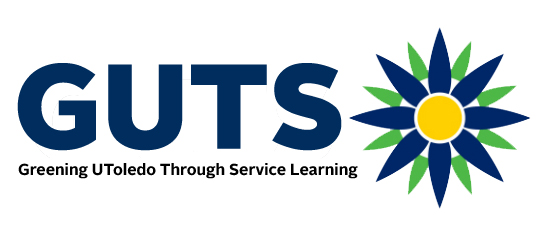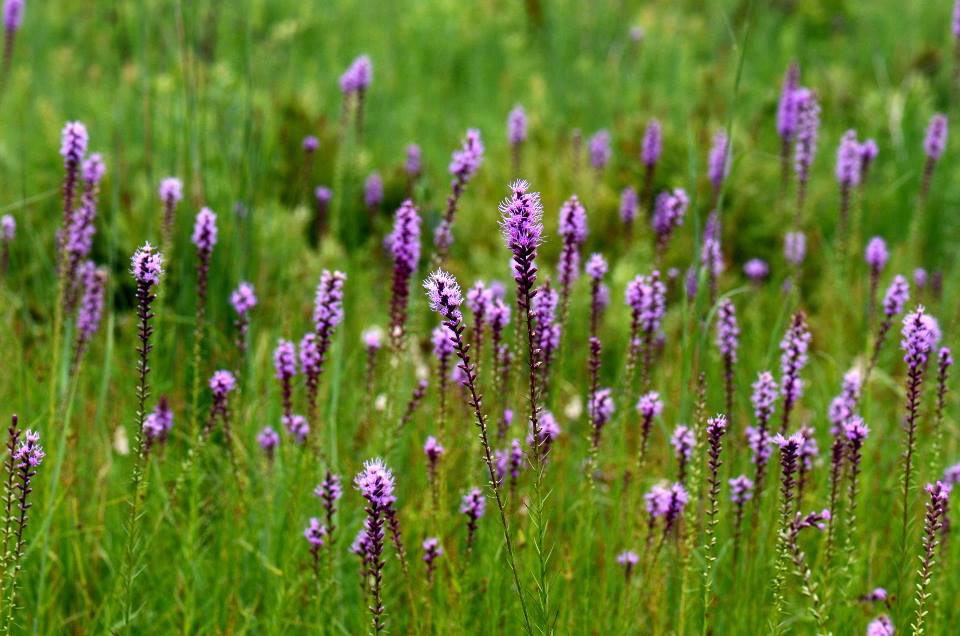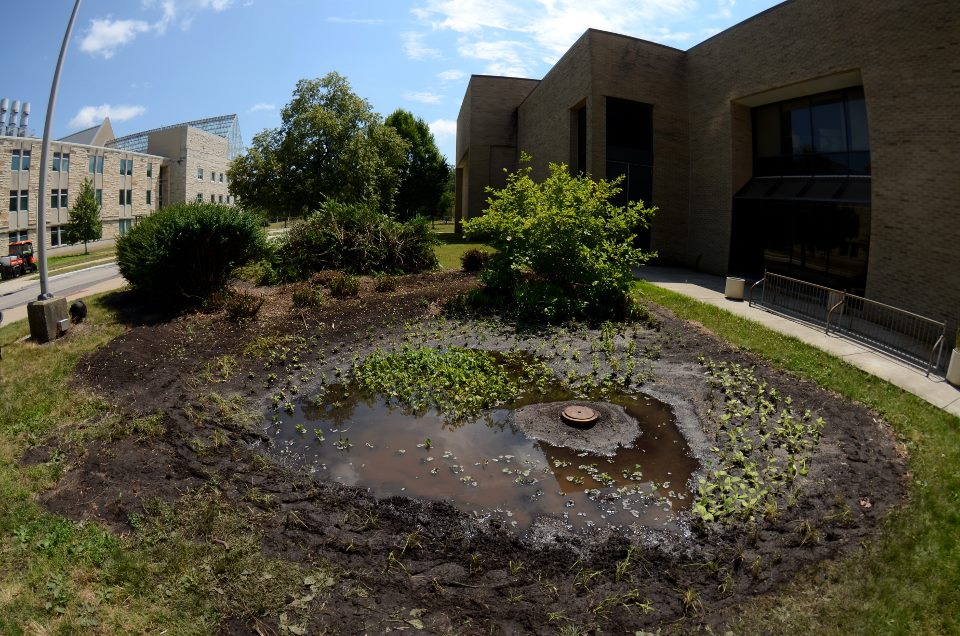Greening Toledo Through Service Learning Mission

The mission of Greening UToledo Through Service Learning (GUTS) is to create native landscapes at The University of Toledo which increases sustainability, conservation and biodiversity through the work of students and undergraduate service learning volunteers.
THE ENVIRONMENT OF NORTHWEST OHIO
As most Midwesterners know, Ohio can experience all four seasons in one week (even in one day) and having plants adaptable to weather changes is important.
In this region, the winters are cold and snowy, and the summers get hot and humid and are sunny. Also affecting weather is the Great Lakes, specifically Lake Michigan, creating lake effect weather systems impacting the plants and ecosystems growing here.
Northwest Ohio historically was dominated by woodlands with open forest (30-80 percent tree cover), closed canopy forest (80-100 percent tree cover) and prairie grasslands with very little tree cover (1). Yearly average rainfall in the Toledo is 33.55 inches according to the National Climatic Data Center. This amount of rain typically supports forest cover (a part of the Eastern Woodlands).

However, a significant portion of Lucas County, known as of the Oak Openings Region, supports both wet and dry prairie grasslands.
The Oak Openings Region formed thousands of years ago when glacial retreat left behind sandy ridges and eventually formed Lake Erie. The sandy beaches formed well-drained and poorly-drained sandy soils, where plants that prefer dry soil can grow right next to low lying areas.
These combined conditions prevents a large number of trees from growing, forming woodland savannas allowing a larger variety of plants to grow. This rare ecosystem is one of the only places where it occurs on Earth and makes the ecosystems located in Lucas County unique and in need of conservation.
Growing native plants allows us to make sure this ecosystem, with all of its insects, pollinators, flora and fauna can continue to live here and humans can enjoy the beauty and benefit of what this ecosystem has to offer.
Environmental Benefits
Native plants are beneficial because they work with, instead of fighting against, the surrounding environment.
Native plants also require less maintenance compared to traditional turf grass. The native plants used in our garden are the same plants the insects, animals and other plants have been growing and adapting with for the last 10,000 years. As these plants continue to grow and adapt with our changing climate, they will be a key resource for the increased greenhouse gas.
The deep root system of native plants store as much carbon as a forest. Not only do these plants relieve some of the key climate change impacts, but they also provide food and shelter to many insects and birds, ultimately leading to a more diverse food web.
Planting natives also allows for better water quality as water runoff is slowed and filtered through the earth, instead running directly into streams, rivers and lakes. The benefits are not restricted to the UToledo campus; they spread throughout NWO and benefit the health of Lake Erie, birding during Biggest Week and aid in creating a greenway through the Oak Openings Corridor.

Ecological Processes
Native plants are said to be easier to grow than non-native plants bought at a nursery, and this is true: native plants are easier to grow under the right circumstances.
With the correct water, soil and light conditions, native plants require little to no maintenance. They can thrive and take care of themselves. Soil is the layer of Earth where plants grow. Every location has a different soil composition and is made up of weathered down rocks, organic matter, and microorganisms.
The happy medium of soil composition is called loam and is a mix of clay, sand and silt. Soil particle size dictates how quickly and how well the soil drains. Soil drainage is directly related to soil moisture and this ranges on a spectrum from Dry (dry, desert-like soils), Mesic (medium) and Wet (wet, flooded soils). Sunlight ranges from full sun to full shade.
Although seemingly easy to determine, considerations needed to be taken to your garden’s location, as sunlight is harsher later in the day compared to early morning and becomes harsher the further southwest you travel in the United States. A plant’s hardiness is its ability to live through the winter. UToledo is in the 6b category according to the USDA.


